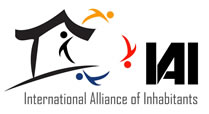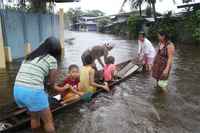Disasters: New risk index helps identify vulnerability
A new disaster risk index launched by the UN University Institute for Environment and Human Security in Bonn could help donors and aid organizations better understand why some countries are more at risk of calamity than others, and shape their responses when disaster strikes.
The World Risk Index (WRI), explained Jörn Birkmann, scientific head of the WRI project at the UN institute, is unique in defining risk as the interaction between a natural hazard and the vulnerability of a particular community. It helps plan not only short-term responses but also long-term interventions.
WRI takes into account social, political, economic and ecological factors to determine the capacity of an affected community to respond. It looks at four main components, which in turn take into account at least 28 variables.
1. Exposure to a natural hazard (sudden as well as slow-onset natural disasters like droughts).
2. Susceptibility, which is understood as the likelihood of society and ecosystems to be damaged should a natural hazard occur. Existing economic, infrastructure, nutrition and housing conditions are taken into account.
3. The capacity to cope, which looks at the state of governance, disaster preparedness and early warning systems, medical services, and social and material security levels. "Governance is a critical issue as it is politically sensitive which is why it is overlooked by many similar indices, but the fact is you need a stable government that has the capacity to deliver to help people become resilient," said Birkmann. He illustrated his point by contrasting the impact of the recent earthquakes in Haiti and Japan. "Owing to higher coping and adaptive capacities, such as building laws, there were significantly fewer victims in Japan."
4. Adaptation strategies - implying the capacities and strategies which help communities address the expected negative consequences of natural hazards and climate change.
“Information on coping capacities is relevant for short-term responses, but where long-term programmes and planning is concerned, it is useful for NGOs to know about the area’s adaptation capacity,” said Peter Mucke, managing director of Bündnis Entwicklung Hilft (Alliance Development Works), a consortium of five German NGOs which worked with the UN University on the study. "So while we come to know which countries need short-term responses like food, at the same time we need know where we have to provide food-for-work programmes or strategies to provide water in the long term."
Afghan example
Afghanistan, which according to the WRI has the world’s poorest adaptive capacity and the second lowest coping capacity, tops the list of countries most vulnerable to disasters.
The tool is uncomplicated. “The index gives you all that information at a glance - showing the strength of a particular area’s capacity to adapt or cope in percentages, which is useful to communicate the strengths and weakness of a particular area when you are seeking funding from donors,” said Birkmann.
For instance, Afghanistan's lack of capacity to cope is shown at 93.4 percent; its adaptation capacity 73.55 percent; and vulnerability 76.19 percent. WRI uses the various percentages, and also factors in sea-level rise predictions, to calculate an overall risk figure: The Pacific island of Vanuatu comes out as the country most at risk of a disaster.
No risk index can be flawless: In the case of Vanuatu, people will only be at risk of a metre-rise in sea level in 100 years - by which time the country’s population may have changed considerably from the 2005 figures used by WRI.
WRI is dependent on the availability and quality of the data it uses. It covers 173 out of 192 countries. Somalia is not included.
WRI’s methodology could be used to focus in on any community of any size in the world.
Place à laquelle s'applique cet article
Commentaires
%login_link_starAuthentifiez vous ou créez un nouveau compte utilisateur pour commenter.

